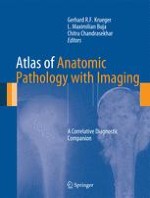Abstract
The liver is the largest solid visceral organ in the body and the most important “chemical factory,” with functions that cannot be replaced by any artificial means. Functions of the liver can essentially be divided into three major groups: synthetic, metabolic, and exocrine. The liver is the key organ in the metabolism of nutrients (glycogens, proteins, fats) and of exogenous chemical materials (drugs, toxins). It has enormous compensatory capacity and regenerative ability. Damage to the liver may not be detected until the late stage, and it is practically impossible for the anatomic pathologist to state exactly how much of the liver parenchyma must be destroyed before liver failure occurs. Massive destruction of the liver parenchyma or severe disorganization of its normal architecture may ultimately lead to hepatic failure. In fulminant liver failure, liver transplantation is by far the only rescue.
